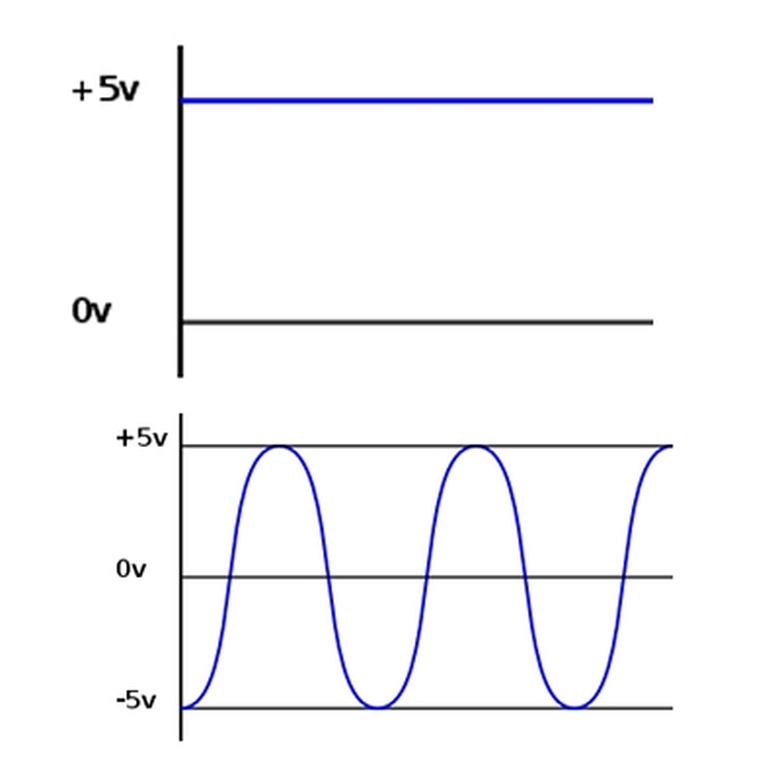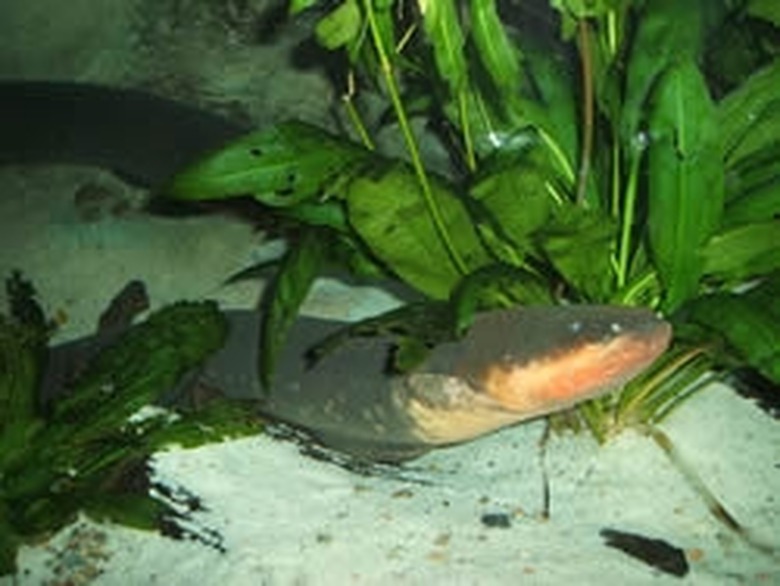AC & DC Characteristics
AC currents and DC currents share some characteristics. They are both composed of moving charges, and are vital for circuits and electronic devices. However, they are generated differently, and behave differently. AC currents are sinusoidal and come from AC generators. DC currents are constant in time and come from sources such as batteries or DC generators. These differences between them affect the roles they have in circuits.
DC Currents
DC Currents
Direct currents flow in one direction only, and are constant in time. Their appearance is that of a straight line which does not vary. They are produced from power sources such as batteries, power supplies and DC generators. Photovoltaic devices such as solar cells also generate DC power.
AC Currents
AC Currents
Alternating currents change direction, flowing first one way and then the other. They are sinusoidal waves, so that they vary in time. They are produced from sources such as power supplies and AC generators. In North America, AC is 120 volts and 60 hertz or cycles per second. This means it changes direction 60 times per second. In Europe, it is generally 50 hertz with 220 to 240 volts.
Electric Generators
Electric Generators
AC generators produce electricity by converting mechanical energy into that of electrical. Mechanical energy via steam is used to rotate the loops in the magnetic field, and the generated emf is a sinusoidal wave that varies in time. DC generators are very similar to their AC counterparts, but they have a generated EMF that is direct current.
Unusual Electric Sources
Unusual Electric Sources
Energy harvesting, also known as power harvesting or energy scavenging, is where ambient energy is stored and captured. Ambient energy sources are natural, non-electrical in nature, and are self-regenerating, such as the wind or the sun. Human energy harvesting uses the human body to produce energy. The human gait, through its vibrational motion, is a natural source of AC power. Knee braces and human backpacks have been created to explore this phenomenon.
Electric eels have organs made up of disk shaped cells that behave like batteries and are piled up in rows, and so they are DC in nature. They can produce 100 to 650 volts, depending on their size. Eels use their electricity to shock prey as well as for self-defense.
Functions
Functions
AC currents are used to power motors found in refrigerators, trains, computers, hard drives, industrial machinery, household appliances, and many other electronic devices. They are used to power buildings, and so is the electricity that comes from the outlet in households. DC currents produced by batteries are found in power tools, portable radios and televisions, toys, and many other devices. There are some devices where either AC or DC power can be used, such as in cell phones. In this case, if a battery is not operating the device, a diode in its capacity as a rectifier is placed inside, such as in the power supply. The diode converts the AC voltage to that of DC.
References
Cite This Article
MLA
Lewis, Kim. "AC & DC Characteristics" sciencing.com, https://www.sciencing.com/ac-dc-characteristics-5435805/. 24 April 2017.
APA
Lewis, Kim. (2017, April 24). AC & DC Characteristics. sciencing.com. Retrieved from https://www.sciencing.com/ac-dc-characteristics-5435805/
Chicago
Lewis, Kim. AC & DC Characteristics last modified March 24, 2022. https://www.sciencing.com/ac-dc-characteristics-5435805/

